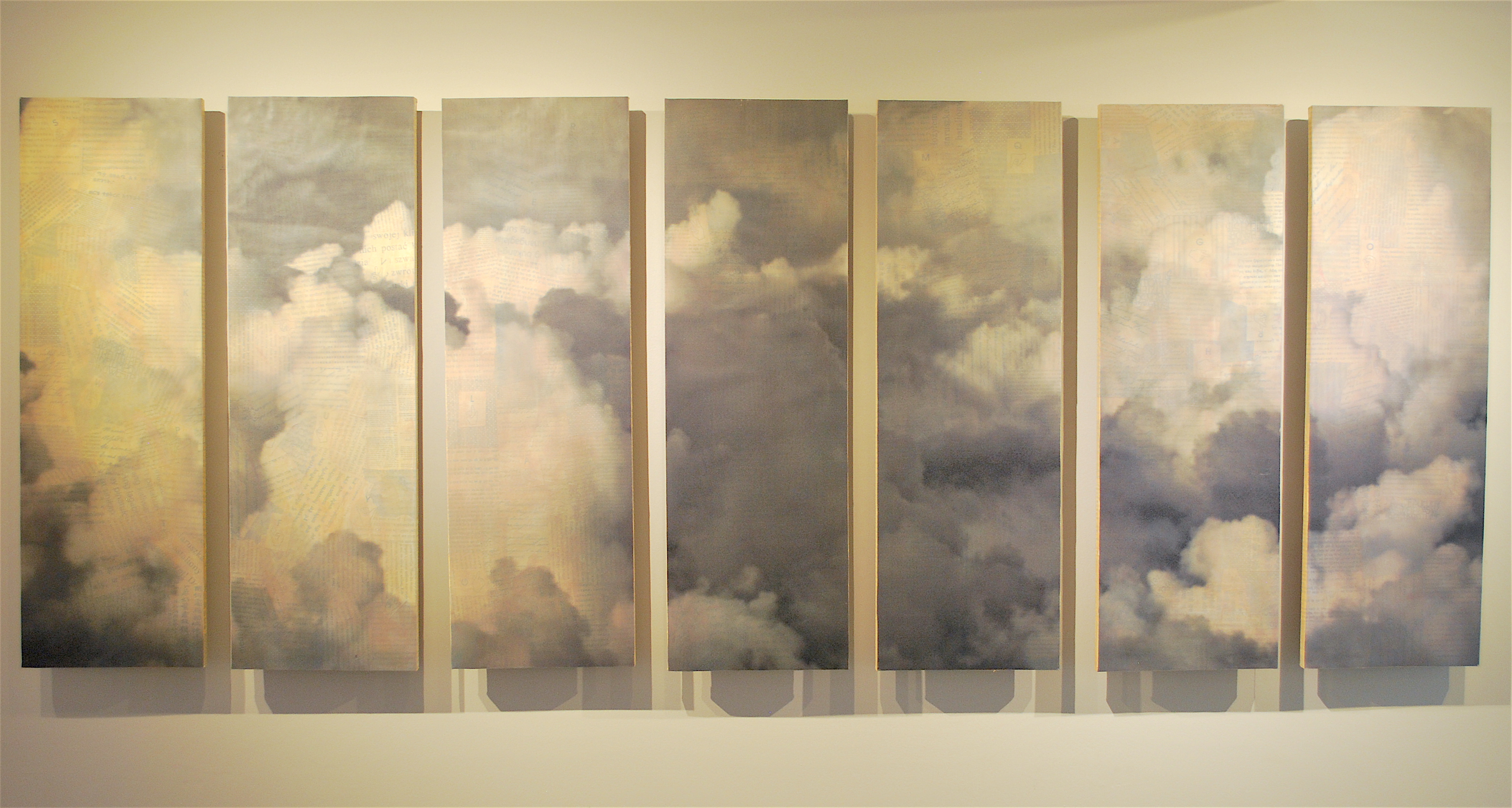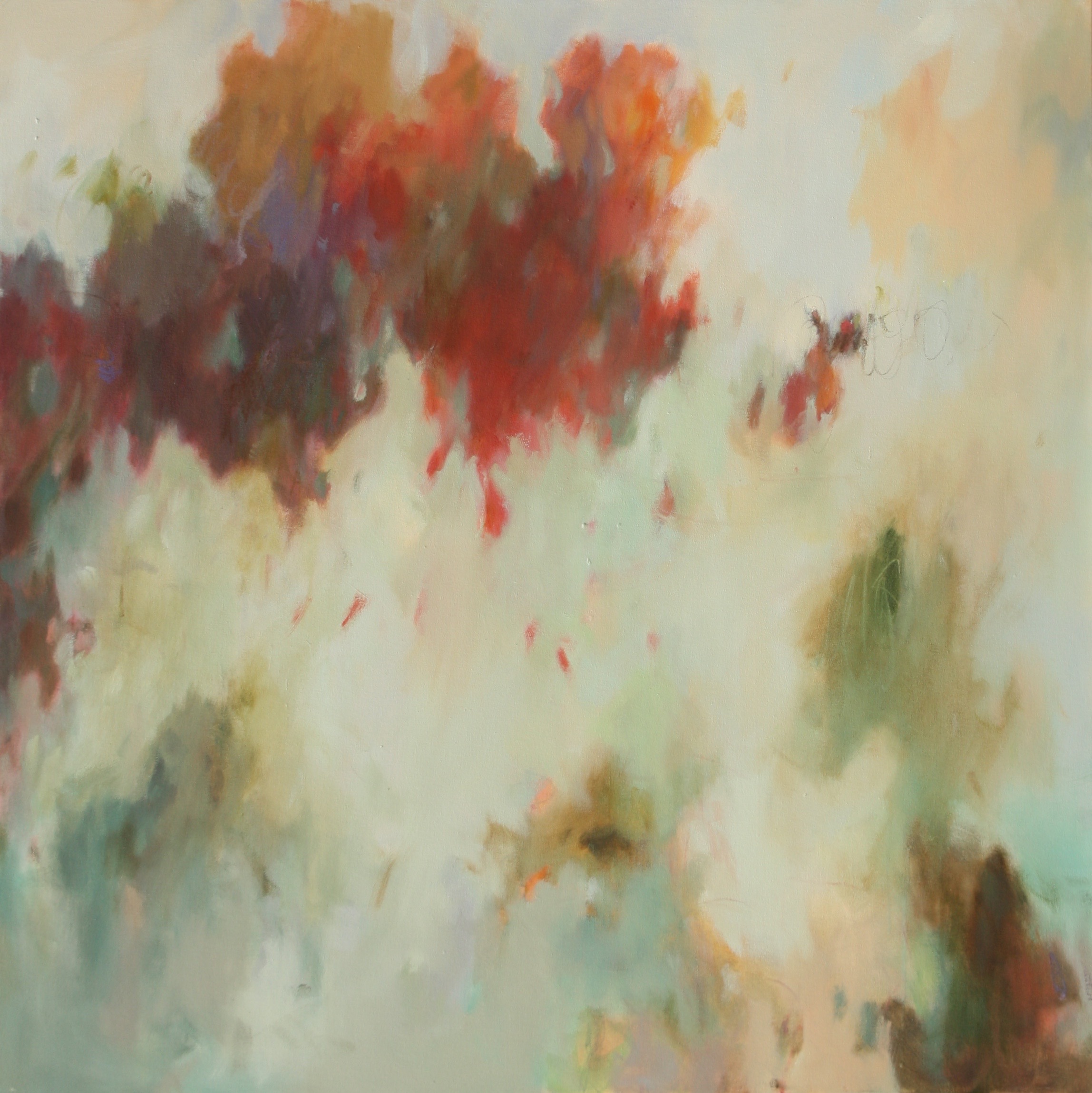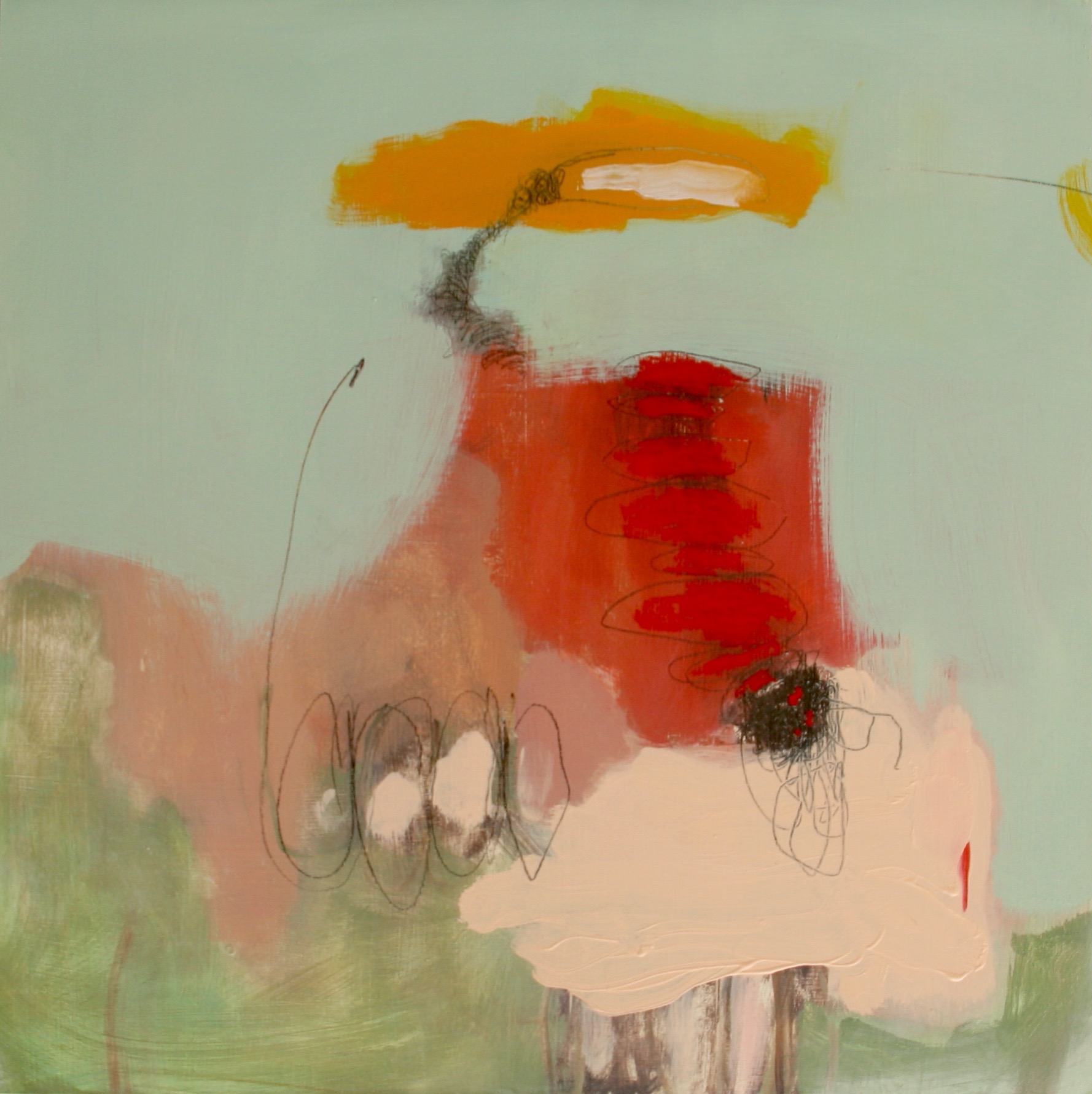
Jean-Pierre Verdijo, Knowledge Acquired by Investigation
In two different current Austin shows, Jean-Pierre Verdijo and Joyce Howell can’t get past the surface of their artwork. And this isn’t necessarily a bad thing. Whether working in collage or oil paint, both artists participate in longstanding and diverse traditions of exploring the flatness of a stretched canvas. In their own ways, they keep this issue fresh and show us that it’s still fertile territory.
Currently at Art for the People Gallery in Austin, Verdijo’s solo exhibition Baptism of Desire shows us his scope: collage, photography, mixed media, and abstract painting crowd into the irregular gallery space. Some of the larger pieces, such as The Power of Positive Intention, dominate an entire wall. Not being able to step back from the work forces us to either confront it from a much closer proximity than we may like, or to bypass it all together. But here, the work dares us to get up close and personal; it’s necessary for understanding Verdijo’s interest in creating subtly dense surfaces.
Knowledge Acquired by Investigation and To Kiss the Sky contain layers that are best understood from only a few feet back. The circular panel of Knowledge Acquired by Investigation is divided into a triangular grid, and within each module are heavily cropped images from art history that are painted over with translucent washes of single colors. Photographs of famous artists and iconic works of art sit next to each other creating a visual dialogue that’s regulated by the piece’s overall composition.
I suspect this is a nod to the art world Verdijo sees his work participating in—a sort of homage to those artists and artworks he finds meaningful—and perhaps it’s even a challenge to the regulatory forces of the grid. Although the images are separated from each other, they’re linked by shared histories. But this piece also evokes ideas about the mass-production of imagery, and reminds us how that process often changes our perception of the artwork when it’s made to fit into a specific or new context. Also, at a quick glance, the imagery dissolves into abstract patterns, and any historical conversations these photographs have slip behind the sheen of decoration.

To Kiss the Sky
Largely monochromatic, To Kiss the Sky also uses collage, but differently. Floating beneath the seven-panel skyscape are fragments of texts. Printed in different languages and jumbled together they lose any coherency. Instead, they draw an unusual connection with the clouds, which aren’t just one thing to those of us on the ground: clouds are both ever-shifting pockets of moisture floating around in the atmosphere as well as an abstract ‘place’ in cyberspace where people save and share information. Verdijo’s work links the two; in his version these worlds coalesce for modern society, which makes for a dark storm of confusion and illegibility.
Several miles away at Wally Workman Gallery, Joyce Howell has a solo show of her recent abstract paintings. At first glance the work is repetitive, and indeed they’re all roughly the same formula: marbled surfaces of muted color brushed together in fluffy strokes. They’re not overwhelmingly large, though her sizes vary.

Joyce Howell, Sage Tea
But all this makes them engaging and approachable, and they’re anything but boring. Howell’s mastery of color and value permeates this exhibition, and each painting is a testimony to her skill. Looking closer at the surfaces of these works, we can see they are meticulously layered with different colors. Hiding behind a large area of pale beige is a patch of weathered purple. Peeking around the corner of a muted pink is a faded turquoise. Pressing through a moss green is an ashen gray. And yet no passage of color dominates the others. Instead, they retain a nervous balance that creates diverse and luminous surfaces. Paintings like this can only be appreciated in the flesh. You can get lost in them if you allow yourself to.

Turkish Delight II
Three smaller works—Turkish Delight I, Turkish Delight II, and Turkish Delight III— lack the airiness that characterize the other paintings, and the shift works well with the change in scale. Here areas of paint are significantly more opaque, and the brushwork is thick. Instead of the soft evaporations of tone and value seen in Layover or Sage Tea, we are confronted with anthropomorphic shapes and dense fields of color. This difference brings to light Howell’s use of line.
Her delicate lines are hallmarks of her work throughout: circling curves and slouching lyrical marks appear on different canvases and echo the subtle tones they dance across. In the smaller paintings, the line work is a central part of the composition. In the larger works, the lines appear to imply things such as a human foot or a plant, and this near-figuration detracts from the paintings. They slip out of balance and lose the odd strength of subtlety. But they still show Howell’s different working methods. Any good abstract painter responds to the size of the canvas. Howell’s process-driven technique is one of negotiation between the artist and the work.
Whether you’re drawn to Howell’s airy abstractions or Verdijo’s layered collages, these two shows illustrate the range of possibilities and pitfalls artists deal with while problem-solving a flat surface. Surface design underscores all paintings, and in these two gallery shows we’re reminded of that for better and for worse.
Joyce Howell is at Wally Workman Gallery, Austin, through April 30. Jean-Pierre Verdijo is at Art For The People Gallery, Austin, through April 24.


